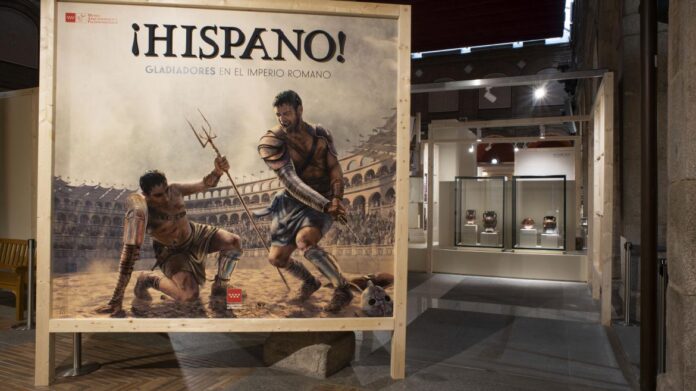The Archaeological and Paleontological Museum of the Community of Madrid has managed to establish itself as one of the most outstanding cultural spaces thanks to its exhibition "¡Hispano! Gladiadores en el Imperio romano". This exhibit, which has captured the public's attention by offering a rigorous and scientific view of gladiatorial combat in ancient Rome, has positioned itself as the third most visited in the museum's history, surpassed only by 'Dragon Hunters' and 'The Cradle of Humanity'.
A public study conducted by MARPA reveals that visitors have expressed a high appreciation for the quality of the pieces on display and for the unique opportunity to observe original armament brought from Pompeii. Moreover, the exhibit allows visitors to delve into the daily life of the gladiators, from their diet to their medical care and training.
The influx of visitors has experienced a notable increase in recent weeks. An example of this phenomenon is the figure recorded on Saturday, September 13, when 1,639 people enjoyed the exhibition.
The museum has also enjoyed tremendous success with its parallel program of activities, selling out all the available spots. The activities have included everything from guided tours and historical reenactments of gladiator combats to a series of lectures on Roman amphitheaters. In total, 6,951 people have participated in these proposals, which also included concerts on the music of ancient Rome and a colloquium on the topic of cinema, organized during La Noche en Blanco.
For those who were unable to attend in person, the museum has launched a permanent virtual tour of the exhibition, available on its website. This platform offers a comprehensive tour of the exhibit, including detailed photographs of the pieces and the explanatory panels.
Along with the exhibition, the museum has published two works: a book of studies on gladiatorial combat and a complete catalog of the exhibition, both available at the museum shop and national bookstores.
Meanwhile, museum visitors will be able to enjoy until October 26 the exhibition 'El arquitecto Rodolfo García-Pablos en el Palacio Arzobispal de Alcalá (1943-1948)', which presents, through historical photographs, the restoration of this emblematic building following its devastation in 1939.
Admission to the museum is free, both for individual visits and guided tours, available at various times throughout the week. This inclusive approach seeks to ensure that the public can continue exploring and valuing the rich historical and archaeological heritage of the region.



